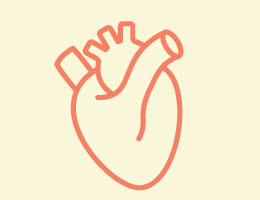The Flanzer Center for Emergencies and Critical Care at White Plains Hospital is the busiest emergency department (ED) in Westchester County and well-positioned to handle a wide range of adult and pediatric emergencies. Specially trained, highly skilled physicians and nurses are always on hand to provide patient-focused emergency medical care in a recently expanded, state-of-the-art setting that stresses comfort and privacy.
From initial treatment to inpatient intensive care, our physicians and nurses have the latest technology available to help them handle life-threatening injuries and illnesses.
The unique two-floor space also houses the Maxine and John Bendheim Family Intermediate Care Center, a unit for patients whose needs are less urgent.
Emergency and critical care services
- Specialty treatment areas for specific types of emergency care, such as orthopedic, pediatric and OB-GYN care; trauma; oncologic care; and stroke and other neurologic emergencies
- X-ray equipment on-site for more rapid imaging and diagnosis and seamless access to advanced imaging technology such as CT Scan, ultrasound and MRI
- Therapeutic hypothermia treatment, which can improve outcomes for some cardiac arrest patients
- Negative pressure areas for isolation of patients with serious infectious disease
- A separate emergency area designed for pediatric patients within the main ED
- Registration at bedside, resulting in less wait time and enhanced privacy
- Flat-screen TVs in all treatment rooms
Our emergency care team
Our ED is staffed by board-certified physicians, as well as Magnet® nurses with special training in emergency medical care. In addition, specially trained volunteers serve as Emergency Department Ambassadors, providing an extra measure of comfort for patients and their families.
We focus on a team approach to each and every one of our patients. Patients with less serious conditions may just be seen in triage, while those with more complex needs can be seen in our acute care areas. This new model of care allows us to evaluate, treat and place patients on the quickest path to recovery at home or in the hospital.
Emergency or urgent care?
In a crisis, it can be hard to determine which level of care is necessary. A common point of confusion is whether a patient should seek emergency care at the hospital or go to our urgent care center. The main difference between the two levels of care is the level of severity.
If you are experiencing a life threatening medical condition, go straight to the emergency room. However, if you are experiencing less severe illnesses or injuries, urgent care is an appropriate solution.
The chart below lists just a few common conditions that require emergency care, and some symptoms that can be treated at our urgent care center:
| Emergency care | Urgent care |
|---|---|
|
|
If you are experiencing a medical emergency, call 9-1-1 immediately.
FAQs
When you arrive in the ED, your condition will be assessed as soon as possible to establish a personal “Care Path,” and you will be directed to an appropriate clinical area. Key members of the clinical team will conduct a more thorough evaluation based on your individual condition. Your care plan may involve blood work, urinalysis, imaging exams, and other initial tests and treatments.
By allocating a specific area for each patient, our team is able to deliver the most effective care in the shortest time possible. Each clinical team is dedicated to a specific area of the ED and comes directly to the patient. This process reduces delays and enhances collaborative, coordinated care.
Care paths based on condition or injury
SUPER-TRACK—for those with less serious conditions. These patients will see a physician specifically assigned to this area, and patients are generally discharged in an hour or less.
MID-TRACK—for those requiring more time and resources, but who are able to walk. These patients will be seated comfortably before being seen by a provider and are generally discharged within 2 hours.
ACUTE-TRACK—for those with more significant injuries or conditions requiring more complex care.
Generally, it takes approximately 3 hours from the patient’s arrival until either discharge or the arrangement of ongoing care in the Hospital.
The White Plains Hospital ED is staffed with physicians and advanced practice providers who specialize in emergency medicine. In addition, you will be seen by trained registered nurses and technicians who also have extensive experience in emergency care. You may also be seen by professionals from other areas of the hospital such as the laboratory, radiology or cardiac center in order to offer you the most effective treatment.
If you are admitted to the Hospital, you will be provided with all of the information regarding where you will be staying and who will be treating you throughout your stay.
Expect to fill out paperwork as requested by the intake coordinator. You should refrain from eating or drinking until you are assessed by a physician. It is also important to understand that as more emergent cases arrive by ambulance, the order in which patients are treated may change, but we always ensure that each patient receives the prompt emergency care that they need.
Our emergency room is open 24/7, so you don’t need to hesitate when thinking about timing. Patients are treated depending on the order in which they arrive and the severity of illness or injury.


